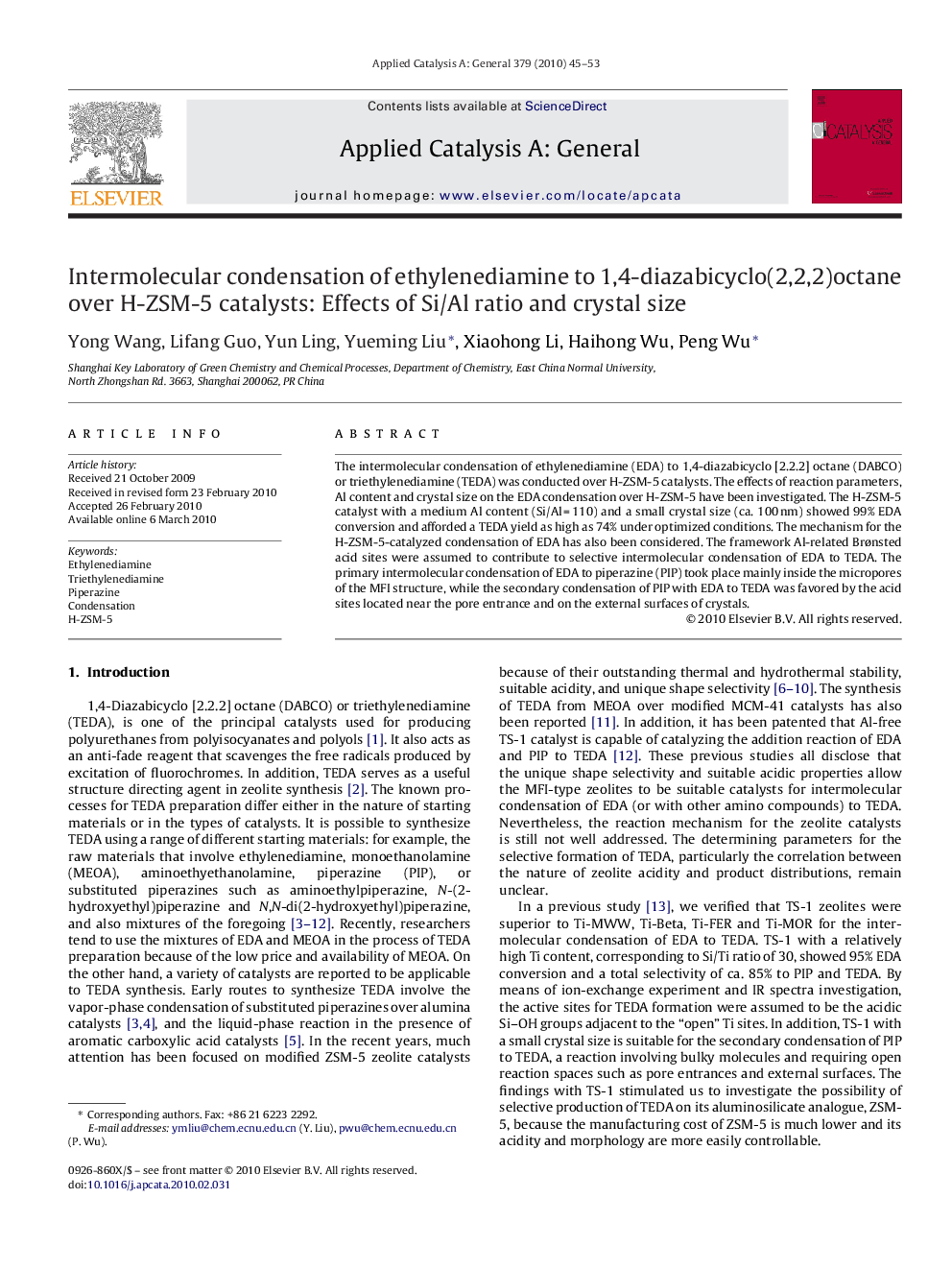| Article ID | Journal | Published Year | Pages | File Type |
|---|---|---|---|---|
| 42167 | Applied Catalysis A: General | 2010 | 9 Pages |
The intermolecular condensation of ethylenediamine (EDA) to 1,4-diazabicyclo [2.2.2] octane (DABCO) or triethylenediamine (TEDA) was conducted over H-ZSM-5 catalysts. The effects of reaction parameters, Al content and crystal size on the EDA condensation over H-ZSM-5 have been investigated. The H-ZSM-5 catalyst with a medium Al content (Si/Al = 110) and a small crystal size (ca. 100 nm) showed 99% EDA conversion and afforded a TEDA yield as high as 74% under optimized conditions. The mechanism for the H-ZSM-5-catalyzed condensation of EDA has also been considered. The framework Al-related Brønsted acid sites were assumed to contribute to selective intermolecular condensation of EDA to TEDA. The primary intermolecular condensation of EDA to piperazine (PIP) took place mainly inside the micropores of the MFI structure, while the secondary condensation of PIP with EDA to TEDA was favored by the acid sites located near the pore entrance and on the external surfaces of crystals.
Graphical abstractH-ZSM-5, which has nanosized crystals (100 nm) and a medium Al content corresponding to an Si/Al ratio of 110 catalyzes effectively the intermolecular condensation of EDA to TEDA, giving 99% EDA conversion and 74% selectivity to TEDA.Figure optionsDownload full-size imageDownload high-quality image (234 K)Download as PowerPoint slide
